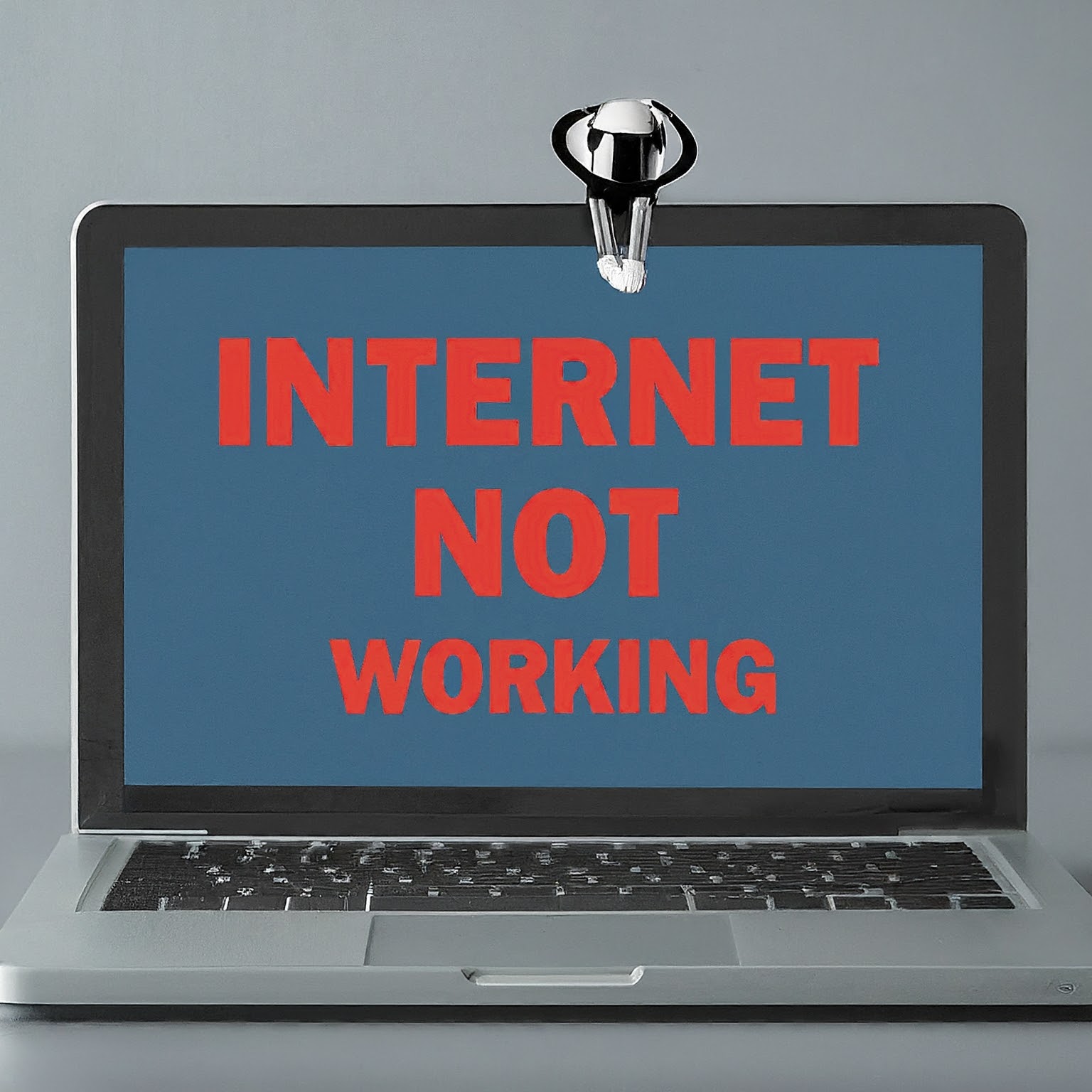In today’s digitally interconnected world, a stable and reliable internet connection is essential for work, education, entertainment, and staying connected with loved ones. However, the frustrating experience of “internet not working” is something we’ve all encountered at some point. This exclusive article aims to provide a comprehensive understanding of this common issue, exploring its various causes, troubleshooting steps, and preventive measures. We’ll delve into both technical and non-technical factors that can contribute to internet connectivity problems and equip you with the knowledge to resolve them effectively.

Common Causes of Internet Not Working
- Issues with Your Internet Service Provider (ISP)
- Outages: ISPs may experience service interruptions due to maintenance, equipment failures, or natural disasters.
- Network Congestion: During peak usage times, the network may become overloaded, leading to slower speeds or temporary outages.
- Billing Problems: Unpaid bills or account issues can result in your internet service being suspended.
- Technical Glitches: Sometimes, there might be technical glitches on the ISP’s end that affect your connection.
- Problems with Your Router or Modem
- Firmware Issues: Outdated firmware can cause compatibility issues and connectivity problems.
- Overheating: Routers and modems can overheat, leading to performance issues or complete shutdowns.
- Hardware Malfunctions: Internal hardware components can fail, rendering the device inoperable.
- Incorrect Settings: Misconfigured settings can prevent your router or modem from establishing a connection.
- Issues with Your Devices
- Network Adapter Problems: The network adapter on your computer or device may be malfunctioning or have outdated drivers.
- Software Conflicts: Certain software or applications can interfere with your internet connection.
- Malware or Viruses: Malicious software can disrupt your network settings or hijack your internet connection.
- Incorrect Network Settings: Incorrectly configured network settings on your device can prevent it from connecting to the internet.
- Environmental Factors
- Physical Obstructions: Thick walls, metal objects, or large appliances can interfere with your WiFi signal.
- Distance from the Router: The further you are from your router, the weaker the signal will be.
- Electromagnetic Interference: Other electronic devices, such as cordless phones or microwave ovens, can cause interference with your WiFi signal.
Troubleshooting Steps
When faced with the dreaded “internet not working” message, there are several troubleshooting steps you can take to identify and resolve the issue.
- Check for Outages
- Visit Your ISP’s Website or App: Most ISPs provide online tools or mobile apps that allow you to check for outages in your area.
- Contact Your ISP: If you suspect an outage, call your ISP’s customer support line to confirm and inquire about the estimated restoration time.
- Restart Your Modem and Router
- Unplug the Power Cord: Unplug the power cord from both your modem and router.
- Wait 30 Seconds: Allow the devices to reset completely.
- Plug the Modem Back In: Plug the modem’s power cord back in and wait for it to establish a connection.
- Plug the Router Back In: Once the modem is online, plug the router’s power cord back in and wait for it to connect.
- Check Your Device’s Network Settings
- Ensure WiFi is Enabled: Make sure WiFi is turned on and your device is connected to the correct network.
- Forget and Reconnect to the Network: If you’re having trouble connecting, try forgetting the network and reconnecting with the correct password.
- Reset Network Settings: If the problem persists, you can reset your network settings. Note that this will erase all saved WiFi passwords and other network configurations.
- Test Another Device
- Connect Another Device to Your WiFi: If possible, connect another device, such as a laptop or smartphone, to your WiFi network.
- Check if the Other Device Connects: If the other device connects successfully, the issue may be with your original device.
- Check for Physical Obstructions and Interference
- Reposition Your Router: If possible, move your router to a more central location or a higher position to improve signal strength.
- Minimize Obstructions: Remove any large metal objects or appliances that may be blocking the WiFi signal.
- Reduce Interference: Keep your router away from other electronic devices that may cause interference.
- Update Your Router’s Firmware
- Check for Updates: Access your router’s settings page and look for a firmware update option.
- Follow the Instructions: If an update is available, follow the on-screen instructions to install it.
- Contact Your ISP’s Technical Support
- Call Customer Service: If you’ve exhausted all troubleshooting steps and still can’t connect to the internet, contact your ISP’s technical support for further assistance.
- Be Prepared: Have your account information and any relevant details about the issue ready when you call.
Preventive Measures
While you can’t always prevent internet outages, there are some proactive steps you can take to minimize their impact:
- Keep Your Equipment Updated: Regularly update your router’s firmware and your device’s operating system and drivers.
- Secure Your Network: Use strong passwords and encryption to protect your network from unauthorized access.
- Consider a Backup Internet Source: If you rely heavily on the internet, consider having a backup option, such as a mobile hotspot.
Conclusion
Experiencing an “internet not working” situation can be frustrating, but with the right knowledge and troubleshooting steps, you can often resolve the issue on your own. By understanding the common causes, following the troubleshooting tips outlined in this article, and taking preventive measures, you can minimize the impact of internet outages and ensure a smoother online experience.
لا تعليق